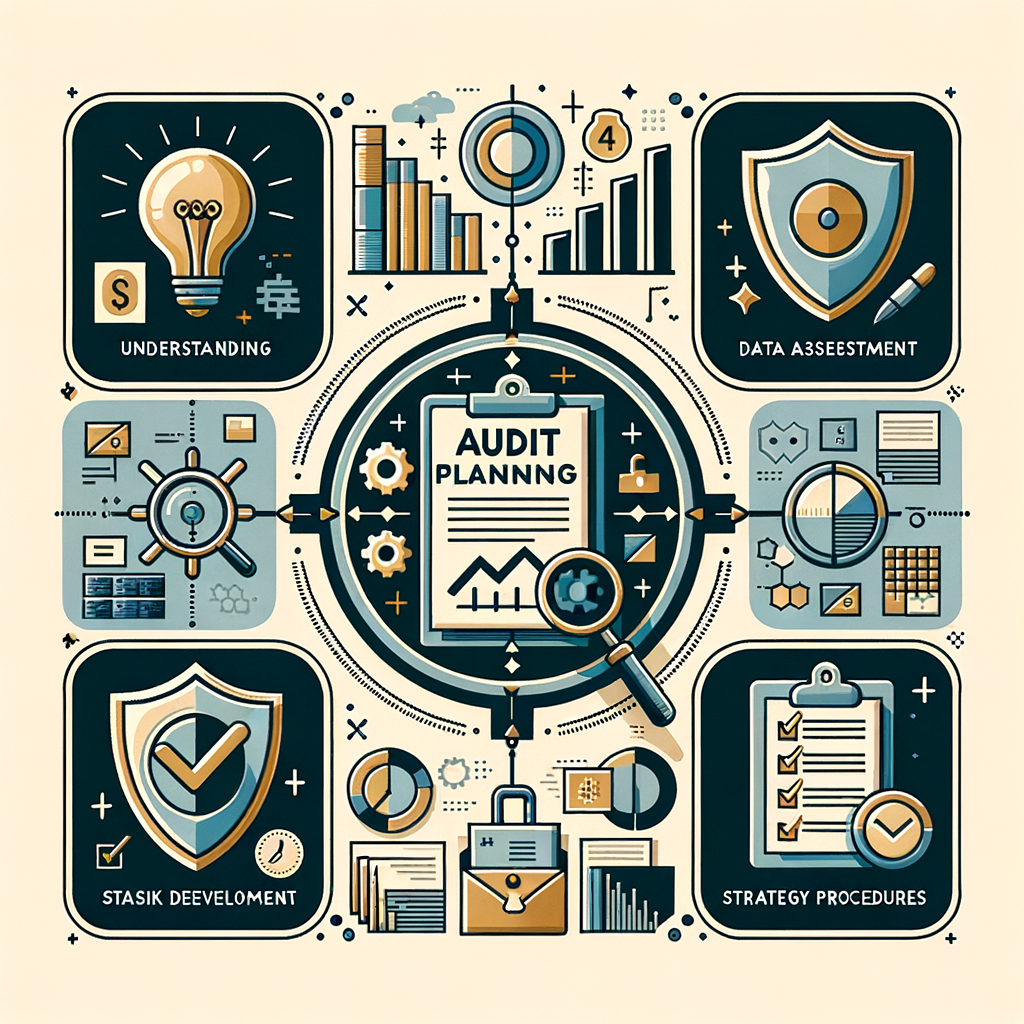What are the Key Steps in Tax Planning for Salaried Individuals & Small Businesses in India?
As the financial year progresses, are you confident you’re making the most of your hard-earned money, or are you losing a significant chunk to taxes? Effective tax planning is not a last-minute scramble in March but a strategic, year-long process that involves legally minimizing your tax liability. By understanding and implementing the key steps in tax planning, you can significantly reduce your tax outgo and channel those savings toward your financial goals. This article will break down the essential steps for both salaried individuals and small business owners in India, providing actionable tips you can implement today. This comprehensive guide is designed to help salaried professionals and entrepreneurs navigate the tax planning process for Indian salaried professionals and business owners with clarity and confidence.
Step 1: Assess Your Current Financial Situation
The foundation of any robust tax plan is a crystal-clear understanding of your complete financial picture. Before you can identify savings opportunities, you must first calculate your total income and understand the tax rules that apply to you. This initial assessment involves gathering all your financial data and getting a realistic view of your tax obligations for the year. It’s a non-negotiable first step that sets the stage for all subsequent planning and investment decisions, ensuring that your strategy is built on accurate information.
Calculate Your Total Gross Income
Your tax liability is calculated based on your total income from all sources. It’s crucial to consolidate these figures accurately.
- For Salaried Individuals: Your primary source of income is your salary. You can find a detailed breakdown in your payslips or Form 16 provided by your employer. This includes your basic salary, House Rent Allowance (HRA), special allowances, and any other perquisites. Understanding each component is the first of the crucial income tax planning steps for employees.
- For Small Business Owners: Your income is the profit generated from your business operations. This is calculated by subtracting all legitimate business expenses from your total revenue. Maintaining accurate and organized books of accounts is vital for this calculation and for substantiating your claims during tax filing.
- For All Taxpayers: Don’t forget to account for income from other sources. This includes rental income from a property (Income from House Property), profits from selling assets like stocks or real estate (Capital Gains), and interest earned from savings accounts, fixed deposits, or bonds (Income from Other Sources).
Identify Your Applicable Tax Regime
Since 2020, Indian taxpayers have the choice between two tax regimes: the Old and the New. This choice significantly impacts your tax planning strategy.
- Old Tax Regime: This traditional regime allows you to claim a wide range of deductions and exemptions, such as those under Section 80C, 80D, HRA, and home loan interest. It is often beneficial for individuals who make significant tax-saving investments.
- New Tax Regime: This regime offers lower, concessional tax rates but requires you to forgo most of the common deductions and exemptions. It simplifies the tax filing process and can be advantageous for those with fewer investments or deductions to claim.
To make an informed decision, you should perform a comparative calculation of your tax liability under both regimes. This analysis will reveal which option leaves more money in your hands. For a detailed comparison, read our guide on the Old vs New Tax Regime: Which Is Better New Tax Regime Or Old Tax Regime For Salaried Employees?. For expert guidance, you can always consult a professional through services like TaxRobo Online CA Consultation Service.
Step 2: Define Your Financial Goals and Align Investments
Effective tax planning goes beyond just saving money; it’s about making your money work for you in alignment with your life goals. When you connect your tax-saving investments to specific financial objectives, the entire process becomes more meaningful and disciplined. Instead of viewing it as a mandatory annual chore, you begin to see it as a powerful tool for wealth creation and achieving your dreams, whether that’s buying a home, funding your child’s education, or securing a comfortable retirement.
Set Short-Term and Long-Term Goals
Categorizing your goals helps you choose the right investment instruments. Financial objectives can be broadly divided into two types:
- Short-Term Goals (1-3 years): These could include saving for a down payment on a car, planning a vacation, or building an emergency fund.
- Long-Term Goals (5+ years): These typically involve larger financial commitments like a down payment for a house, funding your children’s higher education, or building a retirement corpus.
Choose Investments that Align with Goals and Save Tax
Once your goals are defined, you can select tax-saving instruments that match their time horizon and your risk appetite. This is one of the most effective tax strategies for salaried employees as it combines tax efficiency with goal achievement.
For example:
- Equity Linked Savings Scheme (ELSS): These are mutual funds with a lock-in period of just three years and qualify for Section 80C deductions. They have the potential to generate high returns, making them ideal for long-term goals like wealth creation or retirement planning.
- Public Provident Fund (PPF): With a 15-year tenure, PPF is a government-backed, low-risk investment suitable for conservative investors aiming for long-term goals like retirement. The interest earned is tax-free, and contributions are eligible for Section 80C benefits.
Step 3: Explore All Available Tax-Saving Deductions & Exemptions
The Income Tax Act offers numerous provisions that allow you to legally reduce your taxable income, including the Top 10 Tax Deductions for Salaried Employees in India. A key part of the key steps in tax planning India involves thoroughly exploring and utilizing these deductions and exemptions. By strategically channeling your money into specified investments and expenses, you can lower your tax liability significantly. This section provides actionable tax planning tips for salaried individuals and business owners to maximize their savings.
Maximizing Deductions under Chapter VI-A
Chapter VI-A of the Income Tax Act is a goldmine for taxpayers, offering a variety of deductions.
- Section 80C (up to ₹1.5 Lakh): This is the most popular section, offering a deduction of up to ₹1.5 lakh for investments in specified instruments. Key options include:
- Employee Provident Fund (EPF)
- Public Provident Fund (PPF)
- Equity Linked Savings Scheme (ELSS)
- Life Insurance Premiums
- Home Loan Principal Repayment
- Sukanya Samriddhi Yojana (SSY)
- National Savings Certificate (NSC)
- 5-Year Tax-Saving Fixed Deposits
- Section 80D (Health Insurance): You can claim deductions for health insurance premiums paid for yourself, your family, and your parents. The limits are ₹25,000 for self/spouse/children and an additional ₹25,000 for parents (₹50,000 if they are senior citizens).
- Section 80CCD(1B) (NPS): Over and above the 80C limit, you can claim an additional deduction of up to ₹50,000 by investing in the National Pension System (NPS), making it an excellent tool for retirement planning.
- Other Key Sections: Don’t overlook other valuable deductions like Section 80E for interest paid on an education loan and Section 80G for donations made to specified charitable institutions.
Leverage Exemptions and Allowances
Beyond deductions, certain components of your income or specific expenses are exempt from tax.
- For Salaried Individuals:
- House Rent Allowance (HRA): If you live in a rented house, you can claim an exemption on the HRA component of your salary, subject to certain conditions.
- Leave Travel Allowance (LTA): You can claim an exemption for travel expenses incurred for yourself and your family within India, as per the specified rules.
- For Small Business Owners:
- Legitimate Business Expenses: All expenses incurred wholly and exclusively for business purposes are deductible from your revenue. This includes office rent, employee salaries, utility bills, raw material costs, and marketing expenses.
- Presumptive Taxation Scheme: To simplify compliance for small businesses and professionals, the government offers presumptive taxation under Section 44AD: Presumptive Taxation Scheme for Small Businesses and 44ADA. Under this scheme, you can declare your income as a fixed percentage of your gross turnover, avoiding the need to maintain detailed books of accounts.
Step 4: Implement and Document Your Tax Plan
A well-laid-out plan is only effective when it is executed properly and supported by diligent documentation. This final stage is about turning your strategy into action and ensuring you have the necessary proof to back up your claims. Following these salaried employee tax preparation guidelines ensures a smooth and compliant tax filing experience, preventing any last-minute stress or potential issues with the tax authorities.
Invest Systematically, Not in a Rush
One of the biggest tax planning mistakes is waiting until the last quarter (January-March) to make tax-saving investments. This often leads to hasty, ill-informed decisions. Instead, start your investments at the beginning of the financial year. For instruments like ELSS, consider a Systematic Investment Plan (SIP), which allows you to invest a fixed amount every month. This approach not only instills financial discipline but also helps you benefit from rupee cost averaging and the power of compounding over the year.
Maintain Meticulous Records
The Income Tax Department can ask you to furnish proof for the deductions and exemptions you have claimed in your return. Therefore, maintaining organized records is non-negotiable.
- Keep all proof of investment documents, such as ELSS account statements, PPF passbook entries, and life insurance premium receipts.
- Safeguard rent receipts for HRA claims and travel tickets/invoices for LTA claims.
- Store donation receipts for Section 80G claims and home loan statements showing principal and interest components.
- For business owners, maintain all expense bills and invoices neatly.
Verify Your TDS with Form 26AS
Form 26AS is your annual consolidated tax statement. It contains details of all the Tax Deducted at Source (TDS) on your behalf by your employer, clients, or banks. It is crucial to periodically check your Form 26AS on the official Income Tax e-filing portal. This helps you verify that the tax deducted from your income has been correctly deposited with the government. Any discrepancy should be immediately brought to the notice of the deductor to get it corrected.
Conclusion
Mastering your finances begins with smart tax management. Proactive and strategic tax planning is not a complex puzzle reserved for experts; it’s a financial habit that every individual and business owner can cultivate. By following these four essential key steps in tax planning—Assessing your financial situation, Aligning investments with goals, Exploring all deductions, and Implementing your plan with proper documentation—you can transform tax planning from a source of stress into a tool for wealth creation. This disciplined approach ensures you save a significant amount of your hard-earned money, bringing you peace of mind and financial security.
Feeling overwhelmed by the key steps in tax planning India? Let the experts at TaxRobo simplify the process for you. Contact us today for personalized tax advisory and filing services!
Frequently Asked Questions (FAQs)
Q1: What is the difference between tax planning, tax avoidance, and tax evasion?
Answer: Tax planning is the legal and ethical process of using deductions, exemptions, and rebates provided in the Income Tax Act to reduce your tax liability. Tax avoidance involves using legal loopholes in the tax laws to minimize tax, which may be against the spirit of the law. Tax evasion is the illegal act of not paying taxes that are due, typically by concealing income or providing false information, and it carries severe penalties.
Q2: For a salaried person, which tax regime is better: Old or New?
Answer: There is no one-size-fits-all answer. The choice depends entirely on your financial profile. If you have significant investments and expenses that qualify for deductions (like HRA, home loan interest, and investments under Section 80C), the Old Regime might be more beneficial. However, if you have minimal deductions to claim, the lower tax rates of the New Regime could result in a lower tax outgo. It’s best to calculate your tax liability under both regimes before making a final decision.
Q3: What are the most common mistakes to avoid in the tax planning process for Indian salaried professionals?
Answer: Common mistakes include:
- Waiting until the last quarter (Jan-Mar) to make tax-saving investments.
- Buying financial products solely for tax-saving without considering personal financial goals or risk appetite.
- Not declaring all tax-saving investments and proofs to the employer, leading to excess TDS deduction.
- Failing to keep proper documentation and proofs for the deductions and exemptions claimed.
- Ignoring income from other sources like interest or freelance work.
Q4: Can I still plan my taxes if I have missed submitting investment proofs to my employer?
Answer: Yes, absolutely. Even if you missed your employer’s deadline for submitting investment proofs, you have not lost the opportunity to save tax. You can still claim all eligible deductions and exemptions when you file your Income Tax Return (ITR). Simply ensure you have all the necessary proof documents ready while following the Step-by-Step Guide to Filing Income Tax Returns for Salaried Individuals in India and report them correctly in your ITR to get a refund for any excess tax deducted.



